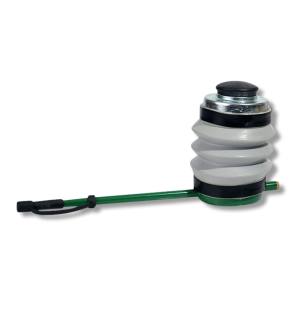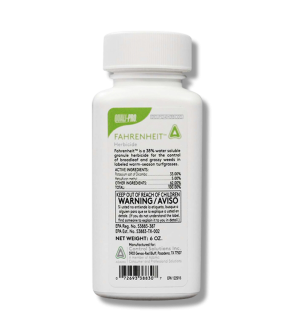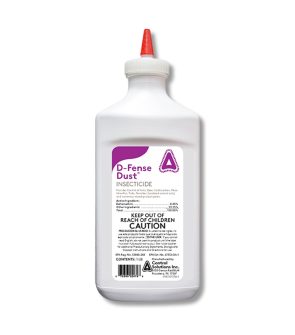Blister Beetle Control
Most Effective Products
Blister Beetle Control: How to Get Rid of Blister Beetles
This page is a general DIY guide on eliminating blister beetles from your ornamentals by using the products and methods suggested throughout this article. Follow this DIY guide and use the recommended products and we guarantee 100% control of blister beetles from your property.
Poison is one of the most feared defenses from pests, but there is a group of beetles called the blister beetle that can simply secrete toxins when threatened, crushed, or handled. These beetles, also known as oil beetles, release an irritating and toxic substance called canthanridin.
Canthanridin is a toxic odorless chemical that causes blisters when it comes into contact with your skin, hence the nickname blister beetle. These pests sometimes end up in bales of alfalfa hay, which can be a common problem for horses, sheep, and other livestock feeding on the tainted foliage. In some cases, the dead blister beetle or foliage with dried toxins effect animals from temporary poisoning to death, depending on the amount of canthanridin digested and the size and health of the animal.
Unfortunately, blister beetles have a tendency to gather in large groups to feed on various plants and weeds, which increases the risk of contact for people and digestion by animals. These pests are most rampant throughout the southern and eastern areas of the United States. Therefore, it is best to get rid of blister beetles before they increase in their population and feeding activities in your desired foliage by following the steps and products listed in this DIY guide.
Identification
Before proceeding with treatment, you will need to be sure the pest infesting your foliage is a blister beetle. Misidentification can lead you to using the wrong products and treatment approach, costing you time and money. There are over 250 species of blister beetles in the United States, but there are some common characteristics among them:

- Blister beetles are soft-bodied insects that range from 3/4 of an inch in length.
- They come in many different colors and ash gray, tan to amber, yellow, green, blue, orange, black, green, or brown with some species having either spots or stripes of yellow, red, brown, orange, black, or white.
- Most blister beetles have a long, cylindrical abdomen, narrow thorax, and a head wider than the thorax. In some species, the length of the wings does not cover the length of the thorax. Look our for false blister beetles, which look closer similar to blister beetles. Unlike the blister beetle, the false blister beetle is wider at the front, and covers the head slightly. This make its appear as if the beetle has no neck.
- Unlike other pests, the blister beetle undergoes a different first larvae stage. This metamorphoses is known as hypermetamorphosis, meaning the first larvae stage is unique due to it having well-developed legs that allow the larvae to travel or hitchhike on other insects like bees.
Use the description and image above to help you in identifying blister beetles on your property. If unsure, bring us a photo or sample of the pest in a sealable plastic container to one of our store locations. By doing so, we can properly identify the pest and suggest the appropriate products and treatment plan for that pest. For further assistance, you may call or email us.
Inspection
Once blister beetles have been confirmed on your property, you can move forward with inspection. During this phase, you are learning where blister beetles are found, and the conditions allowing it to thrive. By learning where blister beetles are in your yard can help you determine where to focus your pesticide applications.

Where to Inspect
Blister beetles are mainly outdoor pests that tend to be attracted to flowering plants, foliage, and weeds, especially ironweed, pigweed, and ragweed. Different species have preferred food sources such as the plant leaves, nectar, or pollen of different plants.
While most adults feed only on the floral parts of the plant, they can also eat the leaves and pollen as well. Common broadleaf plants that the adult blister beetle will feed on ranges from alfalfa, carelessweed, peanuts, soybeans, and many other plant species in gardens, meadows, and hay fields.
This pest can also be found in parts of your yard with outbreaks of grasshoppers or bees, this is because blister beetle larvae are voracious consumers of grasshopper and bee eggs.
What to Look For
Examine your plants closely for eaten leaf edges and the beetle themselves. If you grow plants to feed horses with, like alfalfa or other hay, check those closely. Blister beetles are active during the day and are attracted to lights at night.
Blister beetle larvae feed on grasshopper and bee eggs, so if you had previous infestations of those then inspect those areas as well. The larvae will lurk in flowers where they will hitch a ride on bees, and are then carried back to their nest to feed upon the bees eggs and stored food. Some species of blister beetle larvae are able to mimic the sex pheromone of their host bees to entice them towards the larvae. This way the larvae can attach itself to the bees hairs then take off for a quick ride to its next meal. The older larvae will travel to parts of the property with grasshopper activity to consume their eggs.
Adult blister beetles gather in clusters to feed or lay eggs in the soil from mid-May to October. Often, the damage caused by the adult blister beetle is mostly done on the edges of the leaves at the top of the plant. On flowers, the adult blister beetle creates small round or irregular shaped holes.
Treatment
Since blister beetles will secrete cantharidin when crushed or disturbed, we recommend you wear full body coverage with the proper personal protective equipment (PPE).
The key to safely eliminating blister beetles from your property is to address their food sources first then apply a dust insecticide to get rid of the pest itself. Pesticides containing carbaryl, cyfluthrin, deltamethrin, malathion, or pyrethrins are most effective against blister beetles.
It would be best to begin these treatments in late spring and early fall when blister beetle are begin to emerge from the soil as adults.
Step 1: Remove Weeds

The first form of control is to remove the adult blister beetle food source, such as weeds like ironweed, pigweed, and ragweed. We recommend using Fahrenheit Herbicide, which is a water-soluble granule that can get rid of emerged ironweed, pigweed, and ragweed in warm-seasoned turf.
Determine how much Fahrenheit Herbicide to use by measuring the square footage of the treatment area. To do this, measure the length and width of the treatment site in feet then multiply them together (length X width = square footage). For acreage, take the square footage and divide it by one acre (square footage / 43,560 sq. ft.).
For small spot applications, mix 0.2 oz. of Fahrenheit Herbicide into 1 gallon of water to apply over 1,000 sq. ft. of treatment area.
Lightly spray the solution where weeds are established. Use a fan spray setting to get an even coating on the plants’ leaves. Spray on a calm day to avoid drift, and be careful not to over apply your product. You should start to see Fahrenheit take effect after 1 to 2 weeks.
For broadcast applications on larger properties, you can apply this product with a spray rig. Mix 3 to 12 ounces of product into 20 to 80 gallons of water to apply over 1 acre. The exact rate will vary depending on the weeds you’re treating and the native turfgrass. Read the product’s label thoroughly to avoid turf injury.
Avoid applications where roots of ornamental plants, including shrubs, may extend.
Step 2: Repel Grasshoppers

Next, you will need to remove the food source for the blister beetle larvae by getting rid of any grasshoppers in your lawn and ornamentals.
Supreme IT is a broad-spectrum insecticide labeled to control over 70 types of pests, including grasshoppers within your lawn and ornamentals. Once it dries on the treated area it will continue to repel and eliminate grasshoppers for up to 90 days after application. Apply 0.25 to 0.5 fl. oz. of Supreme IT per gallon of water per 1,000 sq. ft. of your lawn and ornamentals.
Since this product will need to be mixed with water, we recommend using a handheld pump sprayer. Fill your sprayer with half the amount of water, then pour in the measured amount of Supreme IT, then fill the rest of the way with remaining half of water. Close the spray tank lid and shake until evenly mixed.
Adjust your sprayer to a fan-setting to ensure the foliage is thoroughly coated, then spray the mixed solution evenly across your lawn. Once your lawn is treated, you will then spray ornamental plants in your yard. Spray the top and bottom of the turf and ornamental blades until wet, but not to the point of run-off.
Once these areas have been treated, you can then perform a perimeter application around your home to keep grasshoppers from invading indoors. For a perimeter application, apply 0.33 to 1 fl. oz. of product per gallon of water per 1,000 sq. ft.
Spray the entry points around the outside of your home like around the doors and windows, vent openings, and other voids in the wall. After entry points are treated, then spray 3 feet up the structure and 3 feet out on the ground. Avoid overlapping this application with previous treatments.
Do not apply Supreme IT on plants being grown for sale or other commercial use, or for commercial seed production, or for research purposes. Nor allow it to be used on plants meant for consumption as food.
Wait until treated areas are thoroughly dry before allowing people and pets to enter.
Step 3: Apply Dust Insecticide

Once blister beetles congregate in groups or established themselves in the dirt it can be hard to simply knock the pests off with an insecticide spray. Sprinkling a dust insecticide over your plants helps to get rid of blister beetles without disturbing the beetle enough to release their blistering chemical.
D-Fense Dust is an easy to use insecticidal dust formulated with the active ingredient deltamethrin 0.05% to control and repel blister beetles from ornamental plants. As a dry insecticidal dust, it will need to be applied with a handheld duster like the Pro Blow Handheld Pesticide Duster.
Apply 8 oz. of D-Fense Dust per 1,000 sq. ft. of shrubs and ornamentals. To apply this product, fill your handheld duster about halfway with the measured amount of D-Fense Dust. Make sure it has enough room to circulate inside the reservoir to avoid clogging and blockage.
Apply a thin layer of D-Fense Dust on both the upper and lower sides of leaves, stems, and flowers. Repeat this treatment once every 7 days until blister beetles have stopped appearing.
For use only on plants intended for aesthetic purposes or climatic modification and being grown in interior plantscapes, ornamental gardens or parks, or on golf courses or lawns or grounds.
Prevention
After eliminating the blister beetles, you will need to prevent them from returning to your lawn and ornamentals. Here are some preventative practices you can take against blister beetles:

- The best way to stop blister beetles from infesting is to ensure their food sources like ironweed, pigweed, and ragweed cannot grow on your property. We recommend using Barricade Granular Pre-Emergent Herbicide, which can get rid of weeds like pigweed in landscape ornamentals. Apply at the rate of 2.5 to 5.94 lbs. of product per 1,000 sq. ft. in the fall and/or spring. With a granule spreader, spread Barricade Granular Pre-Emergent Herbicide evenly over the soils surface, but avoid applying to ornamental shoots which may not allow the product to get a uniform distribution on the soil surface. Delay application around new transplants. Once applied, water the granules in with 0.5 inches of irrigation or at least within 14 days of application. Best weed control is obtained when applied to soil free of clods, weeds, and debris such as leaves.
- Prior to pollinator season, install row covers such as rolls of plastic sheets or screens over rows in the garden or landscape. These measures will help to ensure adult blister beetles cannot feed, and encourage them to leave your property.
- Check hay before giving it to livestock animals, but if pests are present then it will need to be disposed. When blister beetles are squished or threatened they will release their harmful toxins making the hay not safe for animals to feed on.
- On a quarterly basis, apply Supreme IT to your lawn, ornamentals, and perimeter of your home to prevent grasshoppers and their egg laying activities. Eliminating grasshoppers will help to deter blister beetles from settling in these infested areas. Without the eggs, blister beetle larvae will have nothing to feed on and be forced to relocate. Supreme IT leaves a residual that lasts for up to 90 days, so make applications every 3 months for year-round control.
Key Takeaways
What are Blister Beetles?
- Blister beetles are long, narrow plant-feeding beetles, from the family meloidae, that naturally contain a toxin that is highly toxic to animals and cause blisters on people.
How to Get Rid of Blister Beetles
- Remove the food sources for both the adult and larvae stage of the blister beetle by applying Fahrenheit Herbicide to remove weeds and Supreme IT to eliminate grasshoppers. Once treated ornamentals are dry, you can then apply D-Fense Dust to the top and bottom of the ornamental leaves to get rid of adult blister beetles.
Preventing Blister Beetle Reinfestation
- Eliminate conditions for weed growth and apply a pre-emergent herbicide such as Barricade Granular Pre-Emergent Herbicide at the beginning of the fall and spring season. As well as applying Supreme IT on a quarterly basis to your lawn, ornamentals, and homes exterior perimeter to repel grasshoppers and blister beetles.

















































































































































































































































































































































































































































































































































